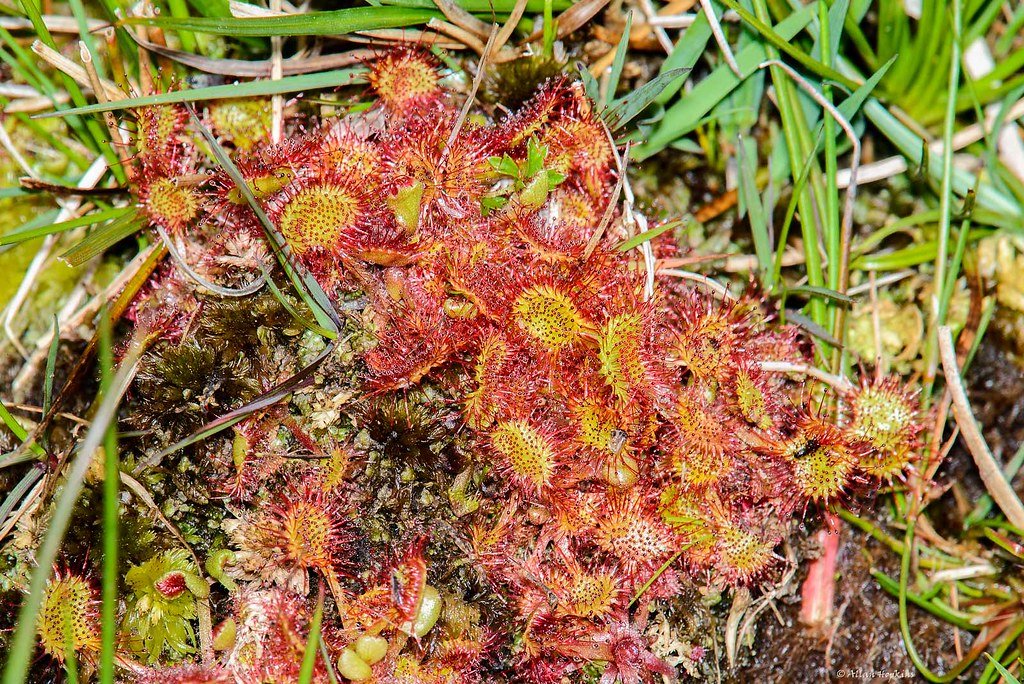Imagine walking through the sun-baked savannas of Africa, where the midday heat can feel almost unbearable. Amid the shimmering haze, you spot a clump of grass hanging from a tree branch, swaying gently in the breeze. This isn’t just any nest—inside, it’s cool and comfortable, defying the scorching temperatures outside. Weaverbirds, with their astonishing craftsmanship, have mastered the art of natural air conditioning. Their nests stand as living proof that the wonders of engineering are not limited to humans. These birds have cracked the code to building homes that breathe, all with nothing but beaks and grass. How do they do it? The answer lies in a beautiful dance between instinct, design, and the invisible power of air.
Weaverbirds: Nature’s Tireless Architects
Weaverbirds are tiny birds with a massive reputation. They’re best known for their elaborate nests, which hang like woven baskets from trees. These avian architects spend hours gathering strips of grass, reeds, and leaves, then weaving them into intricate structures. Unlike most birds, they don’t just pile up twigs. Instead, each nest is a carefully crafted masterpiece, with every strand placed for a reason. Their persistence is jaw-dropping—some weaverbirds will start over from scratch if a single strand is out of place. Watching them, it’s easy to feel a sense of awe. It’s as if these birds were born with blueprints in their minds, passed down through generations.
Why Airflow Matters in the Savannah
The African savanna is unforgiving. Daytime temperatures can soar above 40 degrees Celsius (104 degrees Fahrenheit), turning nests into potential ovens. For eggs and chicks, overheating means certain death. Weaverbirds have adapted to this challenge in remarkable ways. Instead of fighting the climate, they work with it, letting the breeze do the heavy lifting. Airflow isn’t just a bonus; it’s a matter of survival. By engineering their nests for ventilation, these birds create a cool microclimate inside, protecting the next generation from the relentless heat. It’s a solution as elegant as it is essential.
The Secret of the Entrance Tunnel
A weaverbird’s nest isn’t just a ball of grass. One of its most brilliant features is the long, tube-like entrance. This tunnel, often dangling below the main chamber, is a marvel of natural engineering. It acts like a wind catcher, channeling passing breezes deep into the nest. The tunnel’s narrow shape speeds up the airflow, much like how a squeezed garden hose shoots water farther. As the cool air rushes in, it pushes warmer air out through tiny gaps in the weave. This simple, clever design keeps the nest’s interior refreshingly cool, even under the blazing sun.
Woven Walls: The Power of Porosity
Weaverbird nests are never completely airtight. Instead, the woven structure is intentionally porous. These small gaps between grass blades may look like imperfections, but they’re the nest’s hidden superpower. Air can flow freely in and out, carrying heat away and preventing moisture buildup. This ventilation system means the nest never feels stuffy or stifling. It’s a delicate balance: too many holes, and the nest would fall apart; too few, and it would become dangerously hot. The birds know just where to loosen or tighten their weave, achieving a harmony that would impress any engineer.
Orientation: Facing the Wind Head-On
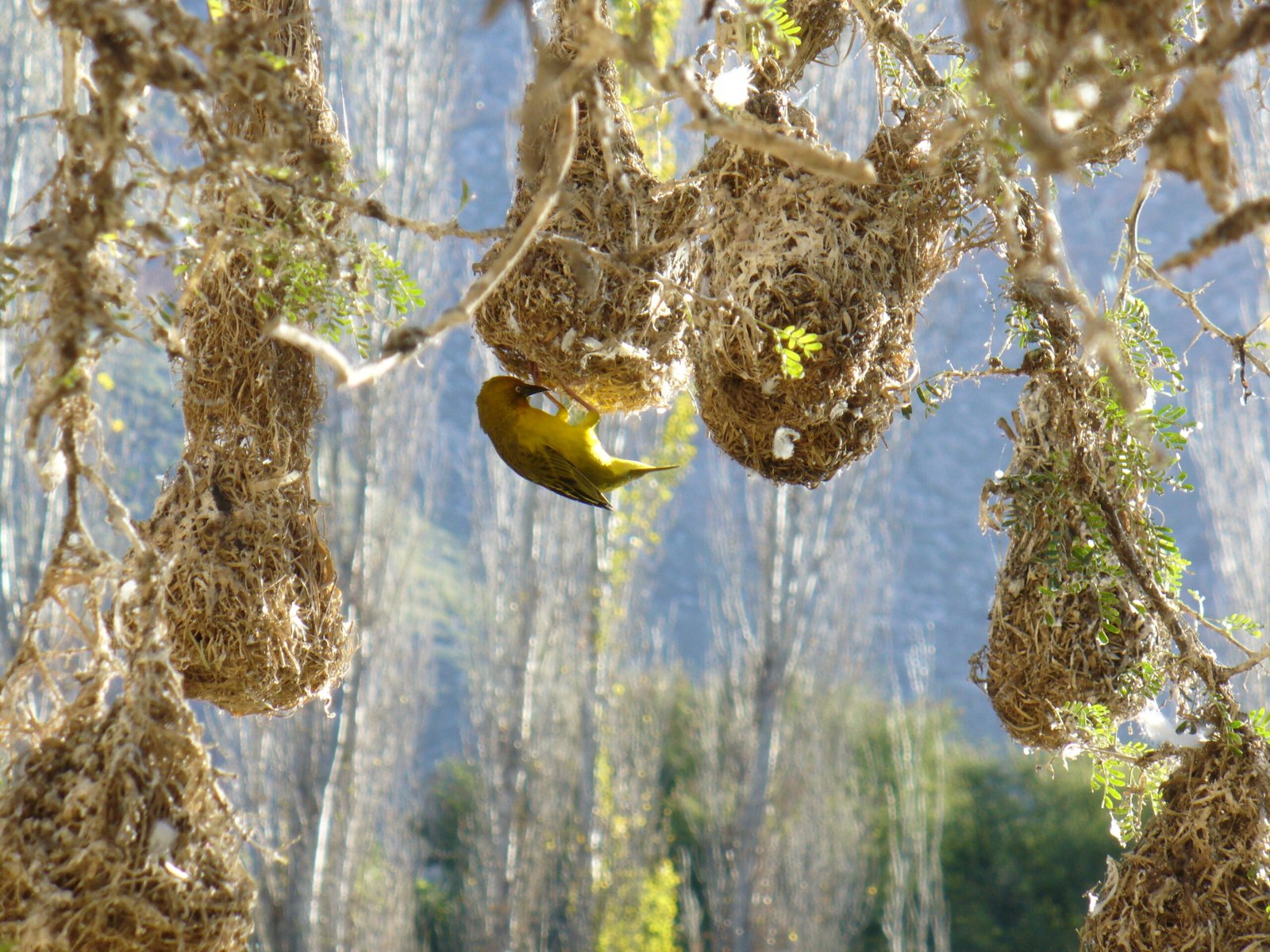
Choosing the right spot for a nest is as important as building it. Weaverbirds are picky about where they hang their homes. They often select branches that catch prevailing winds, maximizing the nest’s exposure to cooling breezes. Some species even orient their nest entrances to face specific directions, like east or southeast, to catch the morning wind while avoiding afternoon sun. It’s a strategy that shows incredible awareness of their environment. By reading the landscape and understanding the patterns of wind and sun, weaverbirds give their nestlings the best chance to thrive.
Materials Matter: Selecting for Cooling
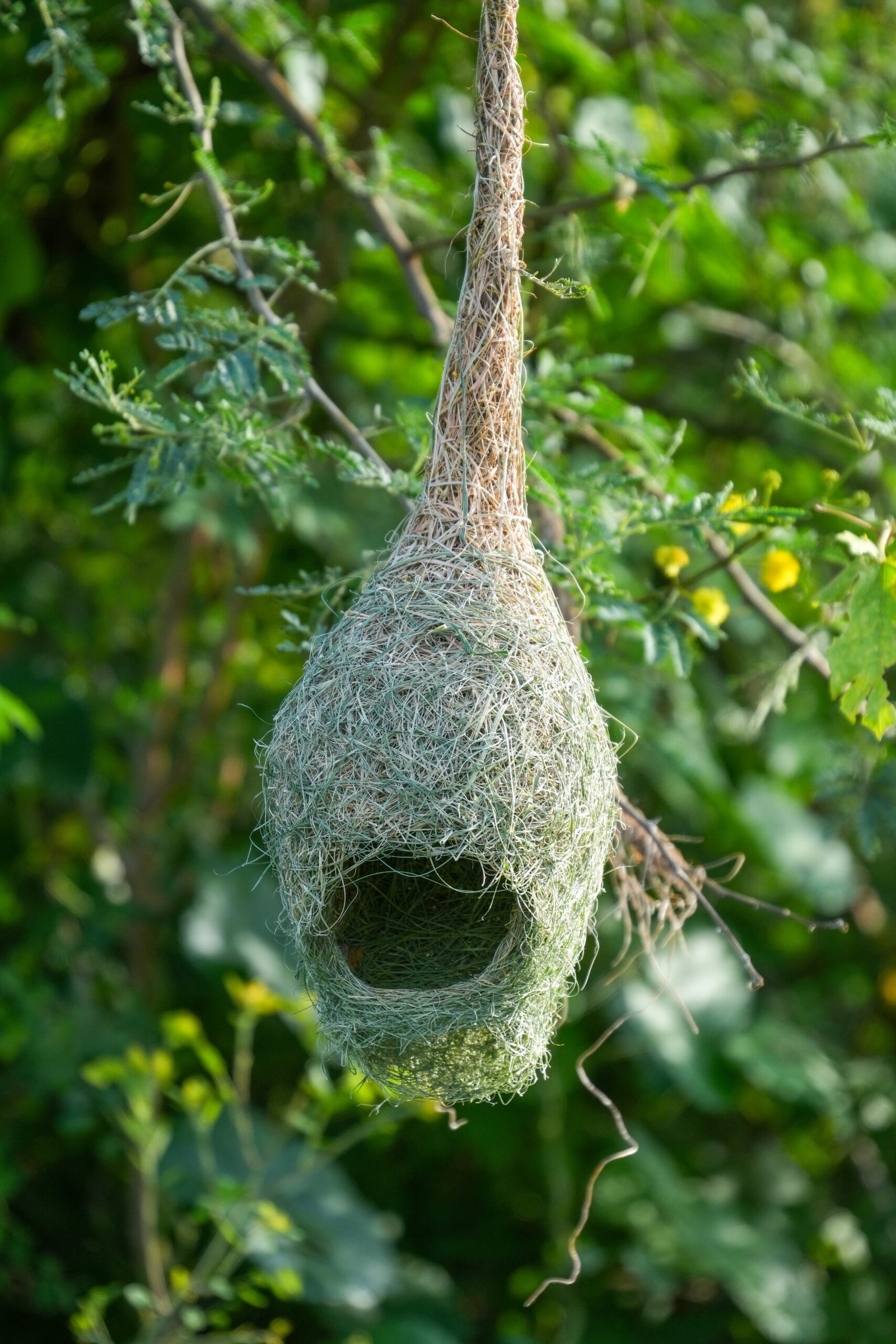
Not all grasses are created equal. Weaverbirds are surprisingly selective about the materials they use. They prefer fresh, green grasses for the outer layers, which are flexible and help reflect sunlight. The inner layers might be lined with softer, insulating materials for comfort. Some species even incorporate leaves or strips of bark, chosen for their ability to hold or release heat. This careful selection isn’t random—it’s part of the birds’ cooling strategy. By mixing and matching materials, weaverbirds fine-tune the nest’s temperature, much like adjusting the settings on an air conditioner.
Building Techniques Passed Down Through Generations

Nest-building isn’t just instinct; it’s a skill honed over time. Young weaverbirds watch adults closely, learning the secrets of weaving and airflow management. Sometimes, juveniles practice by building “play nests” before attempting the real thing. This tradition of learning ensures that each new generation can adapt old techniques to new challenges, like changes in climate or new predators. The process is a blend of inherited knowledge and innovation, keeping weaverbird architecture both timeless and ever-evolving.
Science Peers Into the Mystery
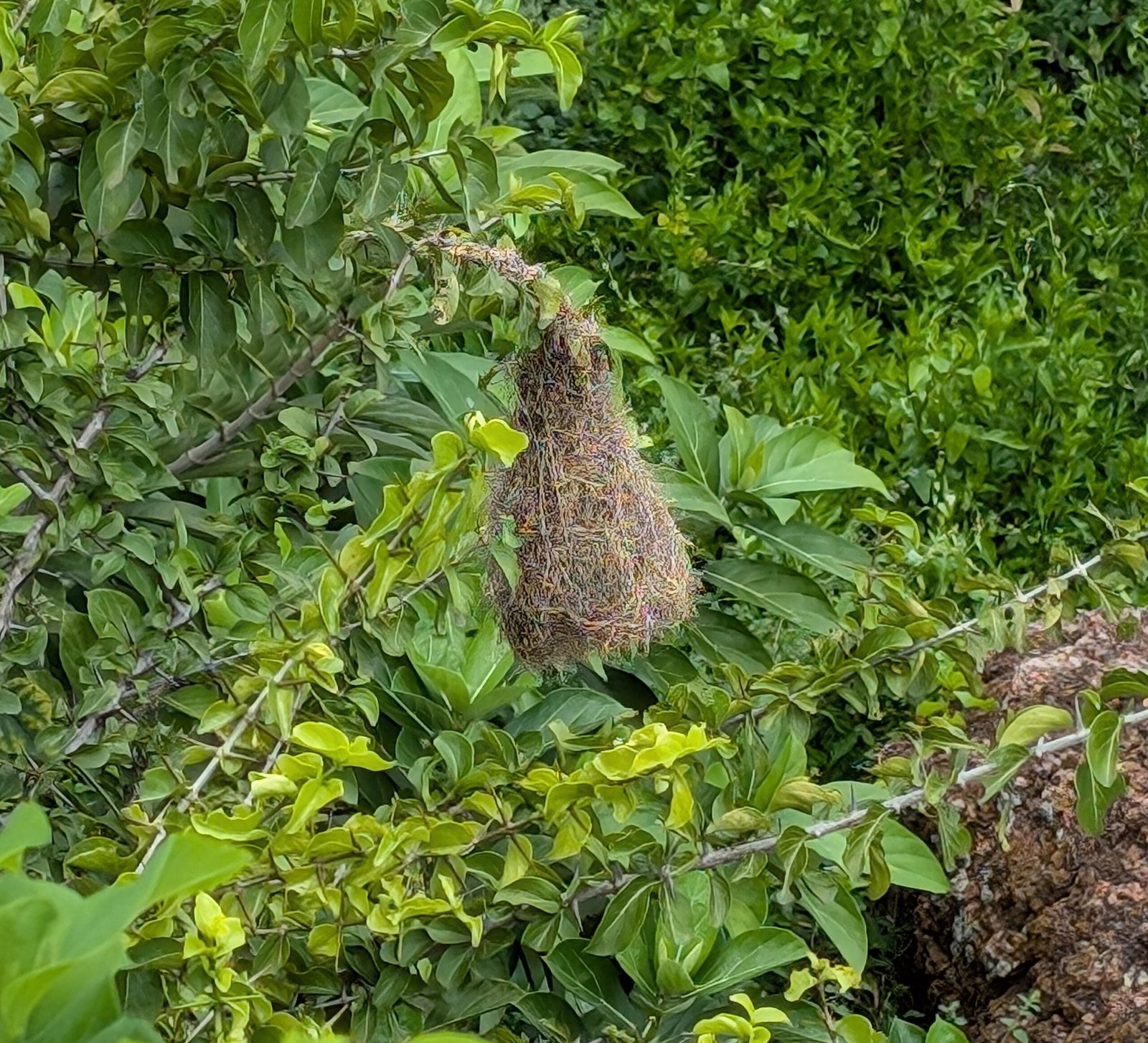
Scientists have long been fascinated by the cooling properties of weaverbird nests. Recent research uses thermal cameras and airflow sensors to measure temperatures inside and outside the nests. The results are stunning: a well-built weaverbird nest can be several degrees cooler than the surrounding air. Researchers also found that nests with longer entrance tunnels and more porous walls have the best ventilation. These discoveries don’t just shed light on bird behavior—they inspire human architects looking for eco-friendly ways to cool buildings without electricity.
Lessons for Human Engineering
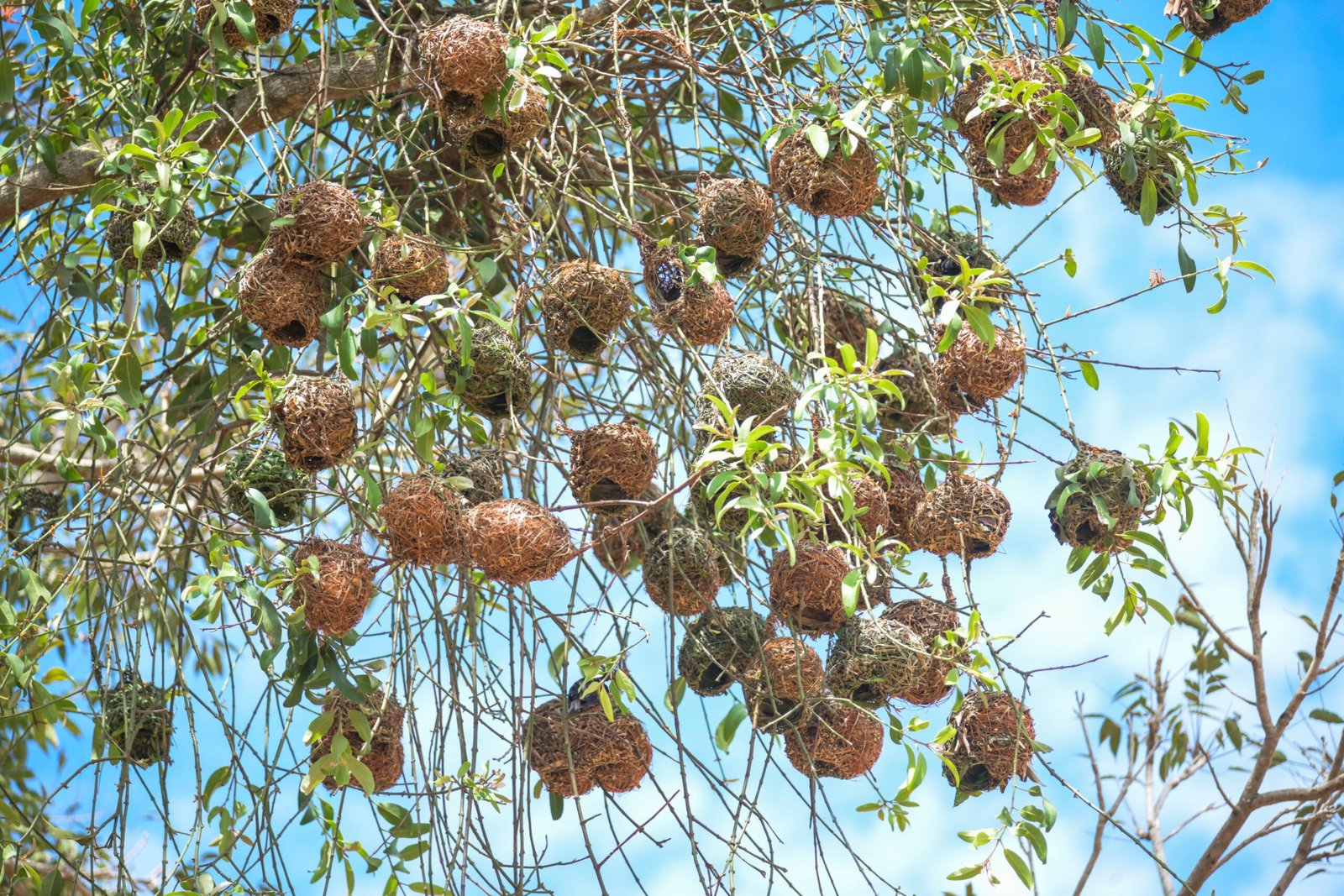
Weaverbirds remind us that sometimes, nature has already solved problems we’re still trying to crack. Their nests are a blueprint for sustainable design: using local materials, maximizing airflow, and working with the environment instead of against it. Architects and engineers are now studying these birds, hoping to mimic their cooling strategies in everything from houses to skyscrapers. The idea that a bird’s nest could spark the next wave of green construction is both humbling and thrilling. It’s a testament to the value of looking to the natural world for inspiration.
The Emotional Connection: Awe and Inspiration

Watching a weaverbird at work can be a moving experience. There’s something deeply inspiring about seeing such a small creature tackle big challenges with creativity and grit. Their nests aren’t just shelters—they’re symbols of resilience and ingenuity. For many people, learning about weaverbirds is a powerful reminder that intelligence comes in many forms, and that every living thing has its own wisdom to share. These birds capture our imagination, urging us to slow down, observe, and appreciate the marvels that flutter just above our heads.
A Living Legacy in the Trees
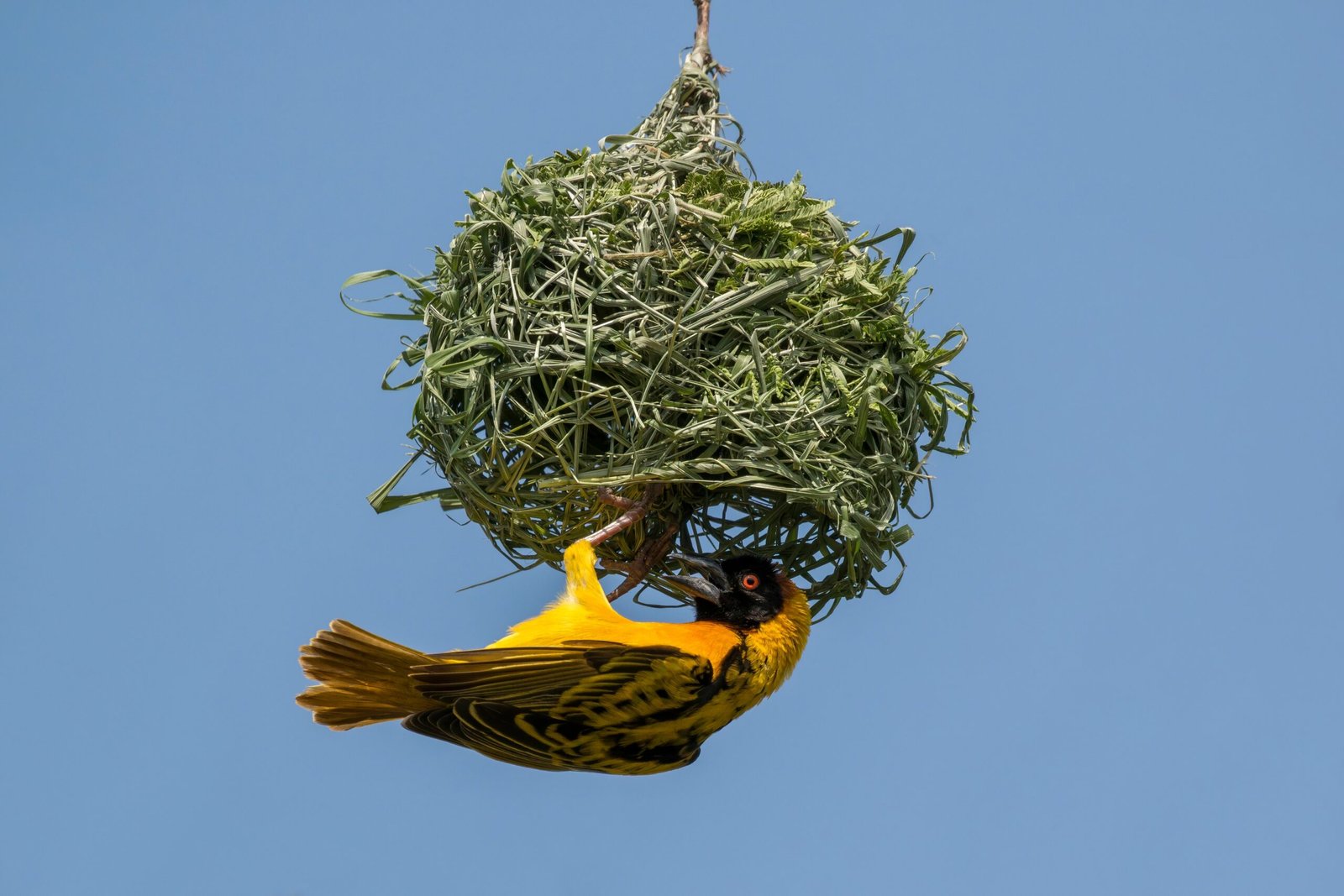
Weaverbird nests dotting the trees are more than just clever constructions—they’re vital parts of the ecosystem. These nests provide shelter not only for weaverbirds but sometimes for other animals, like snakes or insects, after the birds move out. The presence of these nests signals a healthy environment, with enough food, water, and safe trees for building. Weaverbirds play a silent but crucial role in maintaining the balance of their habitats, showing how interconnected all life truly is.
Weaverbirds prove that innovation isn’t limited to humans. Their nests, engineered to harness the power of airflow, offer a masterclass in sustainable design and adaptation. The next time you feel a cool breeze on a hot day, remember: somewhere in the wild, a tiny bird has already figured out how to turn that wind into a life-saving advantage. Isn’t it astonishing how much we can learn from the natural world?


